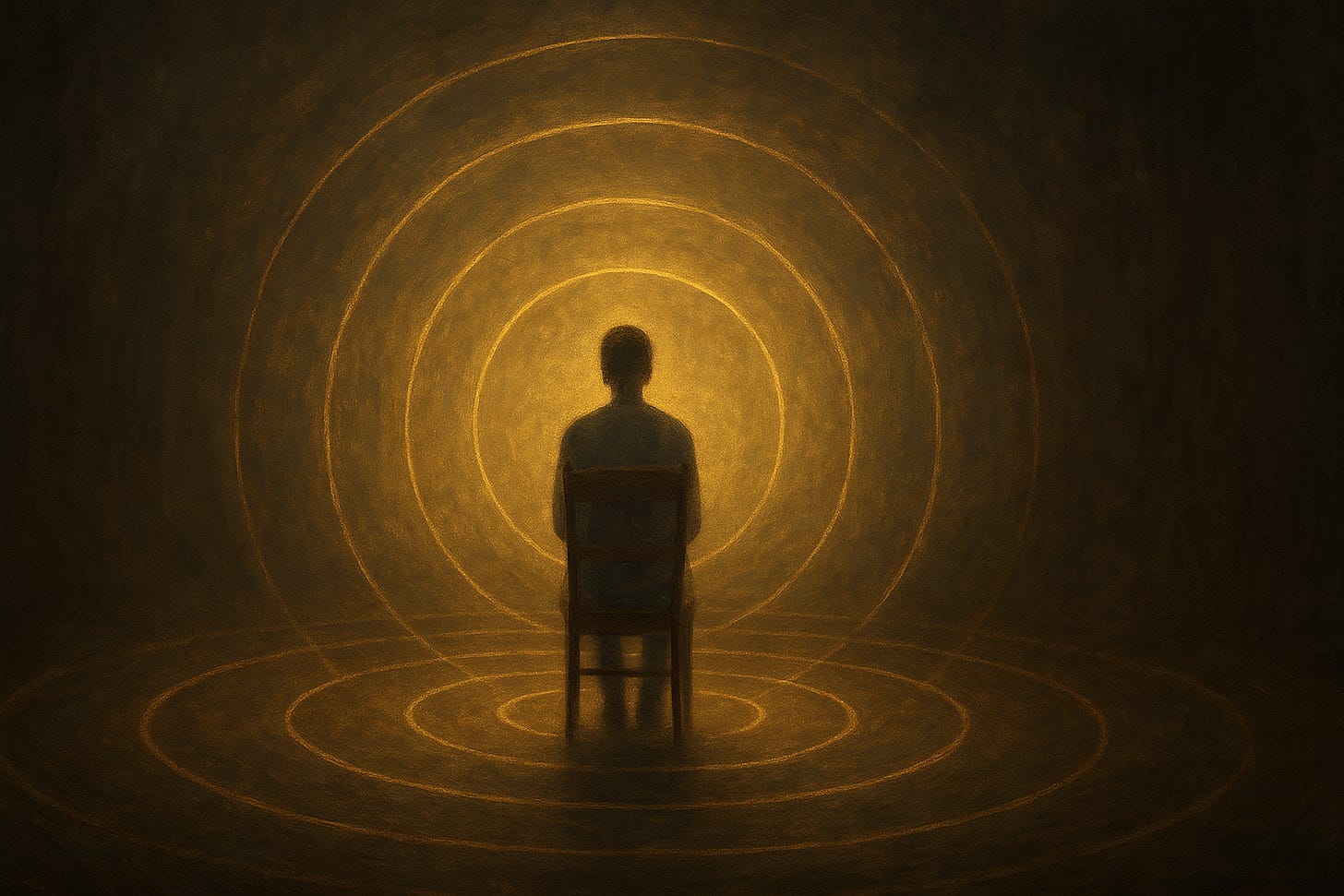The Sacred Geometry of Grief
Learning to Comfort Without Control: What Ring Theory Teaches Us About Grief
I once stood in the back of a small church, watching a woman at her husband’s funeral. The air was thick with flowers and whispers, that strange mix of reverence and awkwardness that always fills a room where death has taken the lead.
She sat in the front pew, hands folded around a damp tissue, her posture soft but steady. People filed past to offer condolences, a gentle current of clasped hands and hushed words. Then someone, a distant relative, maybe, stopped before her and began to sob. Loudly. Their words tumbled out in gasps: how much they missed him, how unbearable this loss was, how they couldn’t sleep.
And then came the part that shifted the air:
the grieving widow reached out and began to comfort them.
I remember feeling something inside me tighten; not so much judgment or anger, but the unmistakable sense that a sacred line had been crossed. The weight that was meant to rest gently in her hands had been handed back to her, heavier than before.
It wasn’t malice. It was what most of us do when we don’t know how to hold the immensity of grief. We reach for our own pain instead of theirs. We fill silence with story. We forget that the most loving thing we can do is stay quiet long enough for their heart to speak.
That’s what brought me back, later, to something called Ring Theory: a simple but transformative way of understanding how to offer comfort without causing more harm.
Ring Theory was created by psychologist Susan Silk and friend Barry Goldman after Susan went through breast cancer treatment. They imagined grief and crisis as a series of concentric circles.
At the center is the person directly experiencing the pain — the widow, the patient, the grieving parent.
In the next ring are their closest loved ones — spouses, children, intimate friends.
Beyond that, each circle expands outward — extended family, colleagues, acquaintances.
The rule is this:
Comfort goes inward. Dump goes outward.
If you’re in a ring farther from the center, you offer comfort to those closer than you, and when you need to process your own feelings, you turn outward toward those on your level or beyond.
It’s astonishing how simple and sacred that geometry can be when we actually honor it.
The widow at the funeral sat in the center ring. The person who came to her for comfort had turned the circle inside out.
And it happens all the time.
People share their own losses, thinking it’s empathy, but it shifts the center of gravity.
They ask the widow how she’s really doing, when she barely knows how to breathe.
They offer solutions, advice, theology, or reassurance when what’s needed is witness.
We want to help.
We want to fix.
But grief isn’t a problem. It’s a sacred passage, and our job is to hold the edges, not steer the center.
If you find comfort in these reflections on the sacred, strange, and deeply human, I invite you to subscribe to receive more pieces like this — tender, true, and a little bit witchy — straight to your inbox.
Think of the rings as a ritual circle of care.
The closer you are to the center, the more your task is to listen, tend, and protect.
The farther you are, the more your task is to hold, to honor, and to direct your questions and emotions elsewhere.
It’s not about hierarchy, but rather more of an energetic responsibility.
Each circle protects the one within it, forming layers of steadiness around the person whose world has come undone.
Sometimes comfort looks like a meal left on the porch, a note that says “No need to reply.”
Sometimes it’s a hand resting silently on a shoulder.
Sometimes it’s knowing when to stay home and light a candle instead.
If you imagine these circles as sacred geometry, patterns of care drawn in invisible ink, you begin to see how love can travel cleanly, without taking anything from the one who’s hurting.
When we bring our unfiltered sorrow to someone in deeper pain, we unknowingly ask them to carry our weight too. But when we send comfort inward — a gesture, a prayer, a text that asks for nothing in return — we keep the circle intact. We help the air stay breathable.
Grief is already so heavy.
The rings don’t erase the pain; they simply make sure it doesn’t crush the one in the center.
I think of that widow often; the way she patted her relative’s hand, offering solace she shouldn’t have had to give. The way her eyes flickered, as if she’d stepped outside her own mourning to manage someone else’s need. It was such a small moment, but it carried the weight of a larger truth: compassion without awareness can wound.
The sacred geometry of grief is about direction.
About knowing where your comfort belongs, and where your sorrow should go to rest.
When we honor the rings, we create something rare: a structure strong enough to hold pain without spreading it.
So if you ever find yourself standing near the edge of someone else’s heartbreak:
Pause.
Breathe.
Remember your place in the circle.
And let your love move inward, clean and gentle, like light through glass.
Love today,
Heather 🌸


